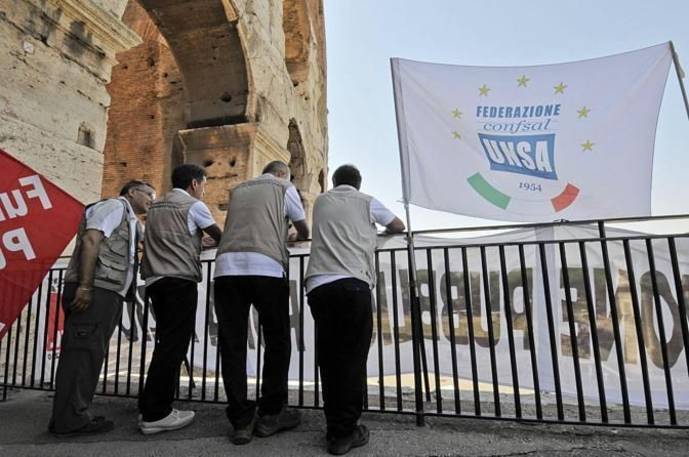


ROME - The sun two days off the summer solstice beat down upon their heads, and the long files of angry international and Italian tourists were hot and understandably bothered. Angry trade unions who represent the custodians that guard the Colosseum had imposed a 3-1/2 hour strike - one of several which also affected the splendid National Museum of antiquities at Palazzo Massimo and the Baths of Diocletian and Caracalla - and the tourists were understandably miserable.
Like the situation at Pompeii, this new cultural heritage disaster and the plight of the touristsmade headlines worldwide, giving the managers of the Italian cultural heritage a well publicized (and well deserved) black eye.
Less publicity has surrounded the fate of two unique warriors in bronze, found less than two miles off the Ionian coast at Riace in August 1972.
These naked warriors, just larger than life size at 205 cm and 198 cm respectively, were made by Greek sculptors circa 450 or 460 BC and were being brought by ship to a destination in Magna Grecia - just when they were being shipped, or their destination, are unknowns; were they to adorn a stadium?
When I visited them shortly after their installation in a special hall in the splendid National Museum in Reggio-Calabria, I was bowled over, but, oddly enough, not only by the bronzes.
The museum houses a truly unique collection of terra cotta plaques which amount to a sketchbook of life in early Calabria. Without the bronzes, I would not have had the serendipitous delight of visiting that museum and seeing those terra cotta postcards from antiquity.
Alas, the museum has been closed for restoration now for the past three years and will not reopen until at least April of 2014.
As a tourist attraction the bronzes represented income for the museum, but for the nonce they can be seen, for free and lying flat on their backs, inside a local government building. The causes for the endless delays were listed by the daily Corriere della Sera as "technical problems, bureaucratic muddles and the usual inevitable lack of funds." The latter is hardly surprising since the costs of restoring the museum have more than tripled from the original E10 million, or circa $13 million, to E33 million.
Where will the extra $30 million or so come from? The truly devastating news is that the Italian Cultural Heritage Ministry is itself not only dead broke, but officially acknowledges that it is itself in debt with unpaid bills amounting to some E40 million (about $50 million), according to a report last week to the Chamber of Deputies. Its working budget has been slashed again and again, with culture taking the brunt of the government's need to curb expenses. Since 2008 the Ministry budget has been cut by almost a quarter, from E2,037,446,020 (roughly $2.6 billion) to this year's E1,547,779,172 ($2 billion).
The worst news of all: funds that to pay for work to protect and maintain the Italian heritage have been reduced by 58% in the past five years.
Source URL: http://iitaly.org/magazine/focus/art-culture/article/italy-culture-crunch
Links
[1] http://iitaly.org/files/colosseo1373292183jpg